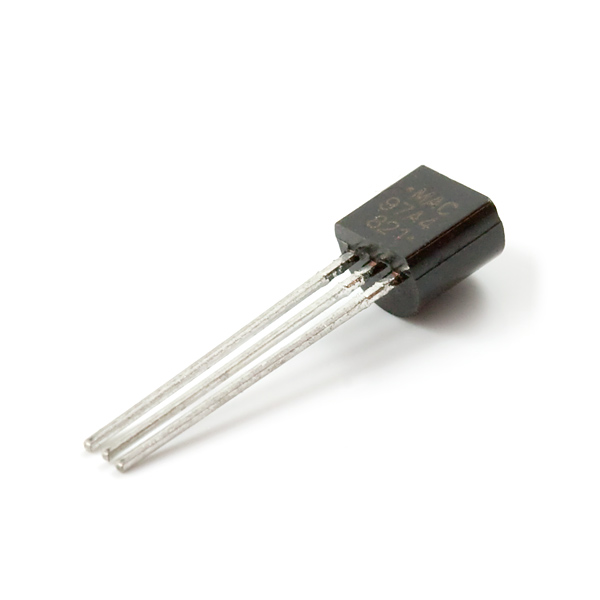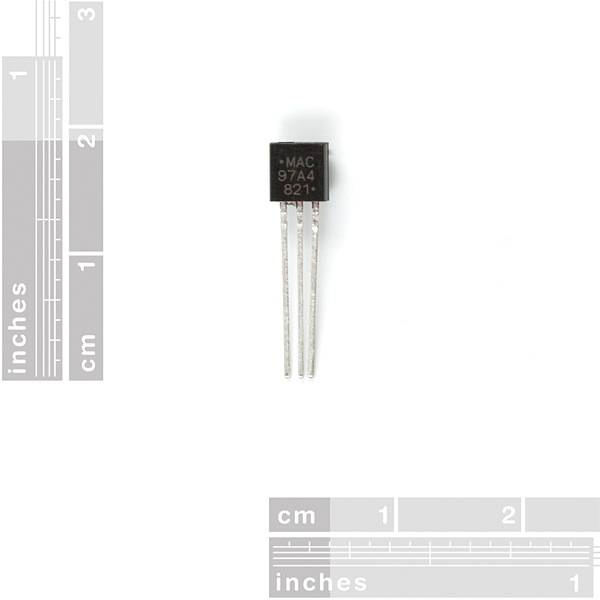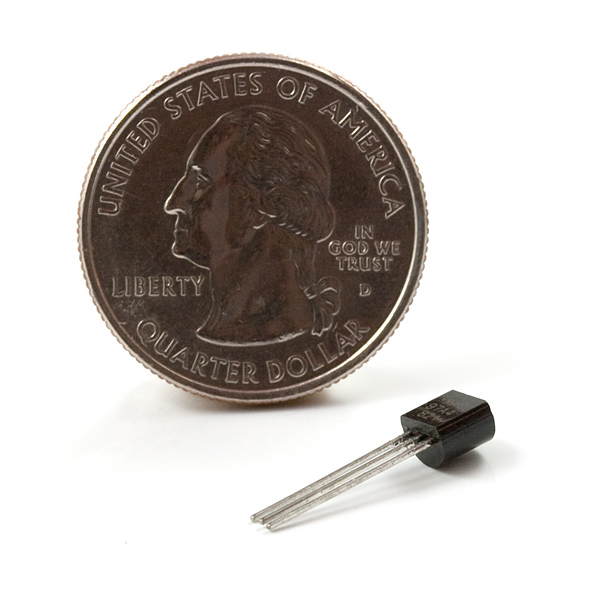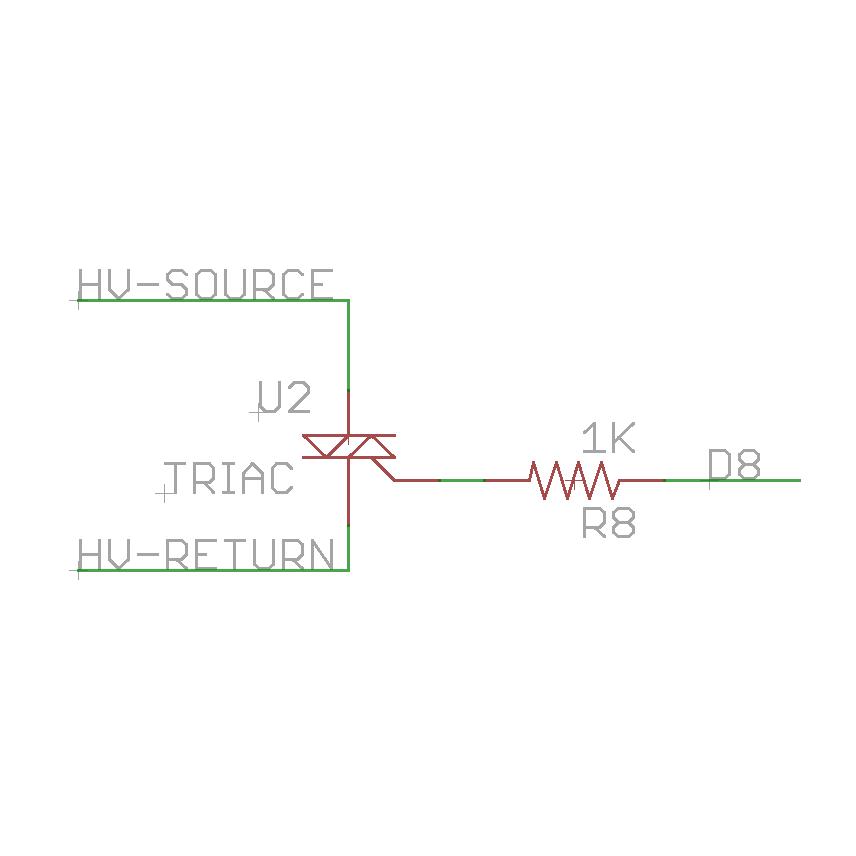TRIAC
This is a sensitive gate TRIAC (also known as a thyristor) with a 200V blocking voltage in a bread board friendly TO-92 package. Use a triac to control an AC load (like EL wire, small incandescent lamps, etc) from a DC source (like the GPIO on a microcontroller).
Checkout our EL wire on a straight jacket tutorial!
- Datasheet (MAC97A4GOS)
TRIAC Product Help and Resources
Heartbeat Straight Jacket
June 4, 2009
An EL project that displays one person's heartbeat on another person's costume.
Core Skill: Soldering
This skill defines how difficult the soldering is on a particular product. It might be a couple simple solder joints, or require special reflow tools.
Skill Level: Noob - Some basic soldering is required, but it is limited to a just a few pins, basic through-hole soldering, and couple (if any) polarized components. A basic soldering iron is all you should need.
See all skill levels
Core Skill: Electrical Prototyping
If it requires power, you need to know how much, what all the pins do, and how to hook it up. You may need to reference datasheets, schematics, and know the ins and outs of electronics.
Skill Level: Noob - You don't need to reference a datasheet, but you will need to know basic power requirements.
See all skill levels
Comments
Looking for answers to technical questions?
We welcome your comments and suggestions below. However, if you are looking for solutions to technical questions please see our Technical Assistance page.
Customer Reviews
No reviews yet.





A triac is a regenerative component. Once it starts conducting above its latching current (which can be as low as 10mA) it won't stop, even if base voltage goes to zero. To stop it, either interrupt the current running through it, or bypass it momentarily with a pushbutton to eliminate the potential across its main terminals. Of course if it is passing AC, the potential drops to zero each time a positive AC pulse crosses over to become a negative AC pulse, and vice-versa. The triac stops at that instant, and has to be retriggered.
Gate current does not have to "come from the MT2 side." So long as the gate potential is either higher or lower than the MT1 terminal, the component will start to conduct.
I'm writing a column about the weirdness of triacs for an upcoming Make magazine.
there are a lot of opticouple triacs on the market in roughly the same price range that isolate your circuits better if you are connected to line power. MOC3063, etc. granted they usually are in a bigger form factor because they are this plus an led emmitter/receiver pair. triacs only work to switch AC, DC would only turn on, not off. sparkfun sells a beefier photoisolated triac (http://www.sparkfun.com/products/10636) that would probably be better for most typical applications.
Anyone else seeing failures here? Many of them I bought seem to only switch states.. some times.
So I wired some EL panels using these (made Simon Says) and I think I'm having the problem you had. First they weren't working at all (i.e. they wouldn't turn off), but I reversed their orientation and that fixed it. They worked on two of the four EL panels, but that could be chalked up to sloppy soldering. The bigger problem was when I turned on my inverters, the buttons used in my DC circuit became super sensitive and would randomly trigger. Moral of the story: optical isolators really should be used with these to avoid small leakage currents from finding their way into the DC circuit, even if the AC and DC grounds are tied together.
Triacs a a bit complicated to use in some cases, even though they're current controlled devices the Gate current must come from the MT2 side of the triac, this page at all about circuits as a good explanation on general triac use. http://www.allaboutcircuits.com/vol_3/chpt_7/6.html
How is it suposed to be connected to control EL wire???
Is it posible to use with a MCU???
It works like a latching switch, you turn it on by putting some voltage on the gate lead, and then it turns on, conducting between the main terminals. It stays on
until the current between the main terminals drops to zero (which is why they work well with AC, which drops to zero twice every cycle). To connect it to control EL wire, put the triac in series with your EL wire. Works fine with an MCU, just ground your MCU to one main terminal, and connect an I/O pin to the gate via a small resistor.
Note, if your EL supply is high voltage and you don't want to tie it to your MCU ground, you can use an opto-isolator to drive the triac. I do it this way a lot, especially when I'm using the triac to switch mains voltage.